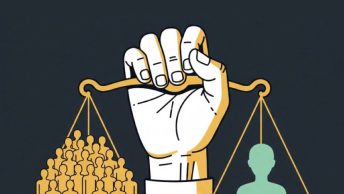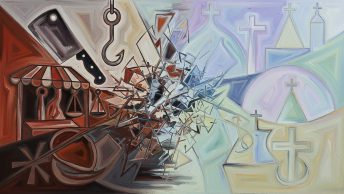Introduction: The Journey so Far
On September 6th, 2018, a five-judge bench of the Supreme Court held that Section 377 of the Indian Penal Code was unconstitutional to the extent that it criminalized homosexuality. The Court held that the provision violated Article 14 and Article 19 of the Constitution as well as the Right to Privacy under Article 21. Following this move, various High Courts affirmed the validity of marriages or live-in relationships within the LGTQ community to various degrees. For example, The Orissa High Court recently upheld the right of a trans-man to live in with his partner regardless of sex. The Uttarakhand High Court also upheld the right of same-sex couples to live in together while stating that they were not competent to enter into marital relationships. Moreover, the Madras High Court held that a marriage solemnized between a man and a trans-woman under the Hindu Marriage Act, 1956 would be valid and entitled to registration. However, these cases have either been confined to live-in relationships or marriages involving persons of different genders. As it stands today, the law does not recognize the right of homosexual couples to get married. This article discusses the recent petitions that were filed in different High Courts for the recognition of same-sex marriage while also examining the different arguments made in favor of and against the move.
Pleas for Legal Recognition
On September 13th, 2020, a PIL was filed in the Delhi High Court seeking the recognition of the right of same-sex couples to get married under the Hindu Marriage Act, 1956. The PIL averred that Section 5 of the Act allows marriage to take place ‘between any two Hindus’ without discriminating between homosexuals and heterosexuals. The petitioners claimed that the non-recognition of same-sex marriages encroached upon the fundamental rights of homosexual couples, especially since their sexuality was recognized as valid in the Navtej Singh judgement. Invoking Article 21 of the Constitution, the petition submitted that the right to marry was a recognized facet of the right to life and that such a right should be extended to homosexual couples as well. Moreover, discriminating against homosexuals and denying them the benefits that were otherwise available to heterosexuals also amounted to a violation of the Right to Equality. The petition went on to locate the principles of equality and non-discrimination within the framework of International Human Rights and highlighted that the right to marry was included in the Universal Declaration of Human Rights as well.
At the same, a petition was filed in the Kerala High Court challenging the provisions of the Special Marriages Act, 1954 to the extent that it did not allow for the registration of homosexual marriages. The petition averred that while the Act did not expressly prohibit homosexual marriages, certain provisions of the Act exhibited heterosexual undertones. It highlighted Section 4(c) of the Act which states that a special marriage could be solemnized only if the male had completed 21 years of age while the female had completed 18 years. The use of the words ‘male’ and ‘female’ hence placed a bar on the solemnization of same-sex marriages. Moreover, certain schedules of the Act also implicitly placed homosexual marriages outside the ambit of Act by using the words ‘bride’ and ‘bridegroom’.
The petition averred that any recognition afforded to homosexuals following Navtej Singh would be meaningless unless sexual minorities were given equal access to marriage. Similar to the PIL filed in the Delhi High Court, the petition claimed that non-recognition of same-sex marriages violated the fundamental rights of the LGTBQ community. It argued that the exclusion of homosexual marriages from the ambit of the Act was based on irrational and stereotypical gender norms prescribed by society, and was in violation of Article 15(1) of the Constitution. Moreover, the non-recognition of homosexual unions hindered their right to expression and violated Article 19(1)(a) as well. The petition also made reference to the US Supreme Court decision in Obergefell v. Hodges which held that homosexuals had the fundamental right to marriage.
The Need for Recognition
One set of arguments that support same-sex marriage stem from the social aspects of marriage as an institution and its evolutionary character. It has been pointed out that marriage is the strongest and one of the most important institutions of human society. This is especially so in India where the concept attains a sacred characteristic. Historically, marriages in India were related to the forging of alliances, attaining property rights and seen as way of continuing the ancestral lineage. However, the concept of marriage has evolved over time to encompass the ideas of love, compassion, mutual respect and sexual attraction. The law should ideally reflect this change and bring members of the LGBTQ community into the fold of marriage. It was further argued that recognition of this right to marriage is a way of ensuring “equality in its truest sense”.
Other arguments relate to the fact the certain legal rights and benefits are predicated on the existence of a marital relationship. According to the rules of the Central Adoptive Response Authority, a child can be adopted only by a married couple or a single female. The option of adoption hence becomes unavailable to homosexual couples. Even if a woman in a homosexual relationship decides to adopt, the other partner would be left without any rights over the child. Economic benefits derived from laws like the Workmen Compensation Act, 1923 and the Employers Provident Fund Scheme, 1952 are also based on relationships of blood or traditional notions of marriage. Provisions for maintenance as governed by Section 125 of the Code of Criminal Procedure or protection from domestic violence as governed by the Domestic Violence Act, 2005 also use gender specific terms and hence confine themselves to relationships between a male and female. Consequentially, recognition of same-sex marriage would entitle homosexual couples to the same benefits that are otherwise accorded to their heterosexual counterparts.
Criticism against the Move
Criticism against the move for same-sex marriage has come from both within and outside the LGBTQ community. As far as opposition from within the community is concerned, the most prominent criticism is that the recognition of same-sex marriage is not the top-most priority of the LGBTQ movement. Given that there is a general lack of queer presence in mainstream workplaces and public spaces, many feel that the efforts of the movement should instead focus on fighting for affirmative action for queer people and ensuring their upliftment through higher education, etc. These efforts become especially important given the passing of the Transgender Persons (Protection of Rights) Act, 2019 which has been criticized for not providing meaningful protection or benefits to the community. Moreover, it has been argued that the term ‘same-sex marriage’ does not imply the right to marry regardless of sex or gender. Rather, the term functions to exclude trans, non-binary and inter-sex people from its ambit. As such, the benefits of same-sex marriage will largely be confined to cisgender individuals.
The very nature of marriage as an institution has also been questioned. It has been highlighted that marriage operates as the main tool through which patriarchal forces play out. The institution often leads to more discrimination against women and reinforcement of gender-roles rather than liberation from societal norms. Moreover, marriage as an institution is also used to maintain caste purity and reinforce the idea of monogamy, hence making it exclusionary. Apart from this, there has also been criticism directed at the inherent heteronormative character of marriage. That is, a demand for the recognition of same-sex marriage will only feed the perceived normality of heterosexual structures and imply that the queer movement cannot not thrive independently of these structures.
Outside the community, some have argued that the political and social environment in India is not conducive for such a change. Even if the Supreme Court were to legalize same-sex marriage, the move will not be endorsed by Indian society, let alone by the ruling party. In other words, the “conservatism and right-wing hatemongering” prevalent in India today is not compatible with a move towards marriage equality. A related argument is that the recognition of same-sex marriages cannot come through judicial intervention, but only through legislative change. Such a change is impossible because no politician would endorse it given the fear of losing out on political prospects in a conservative society like India. The argument found resonance in the fact that Solicitor General, Tushar Mehra, opposed the plea filed in the Delhi High Court on the grounds that Indian culture and law did not recognize same-sex marriage.
Another argument has been made specifically against the PIL filed in the Delhi High Court. The crux of the argument is that while same-sex marriage is welcome, it should not be confined to the personal laws of Hindus alone. This stems from the fact that since independence, efforts in modernizing personal law have focused on Hinduism alone while leaving other religions untouched. The argument goes on to say that the ideal step would be an amendment of the Special Marriages Act or the introduction of a Uniform Civil Code under which LGBTQ civil unions can be solemnized.
Conclusion
While the question of legally recognizing same-sex marriages might seem like the next logical step after the Navtej Singh, the issue is deeply contentious and raises opposition from stakeholders and outsiders alike. Nevertheless, one would have to wait and see as to how the situation unfolds and how the courts deal with this matter. Even if same-sex marriage was to be legally recognized, the criticism presented by the stakeholders certainly cannot be under-emphasized, let alone completely ignored. And yet, the grim reality is that their narratives and their voices are often pushed to the margins. The end result of this supposedly progressive step towards marriage equality might prove untenable if not accompanied by consultation with stakeholders or serious reform at the ground-level.








Nice Article. Thanks for sharing. What Happens If You Miss Jury Duty In California
Your point of view caught my eye and was very interesting. Thanks. I have a question for you.
Can you be more specific about the content of your article? After reading it, I still have some doubts. Hope you can help me.